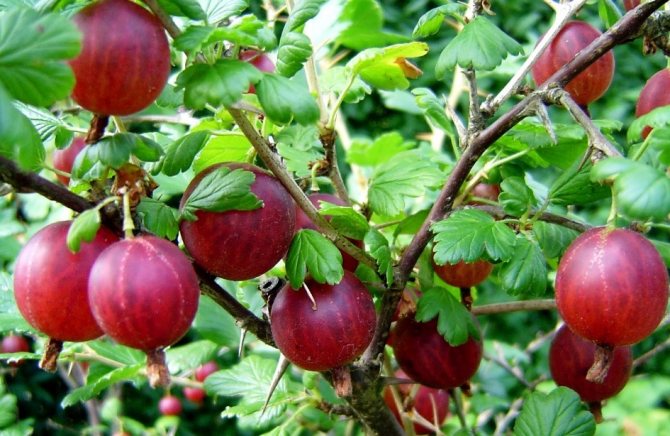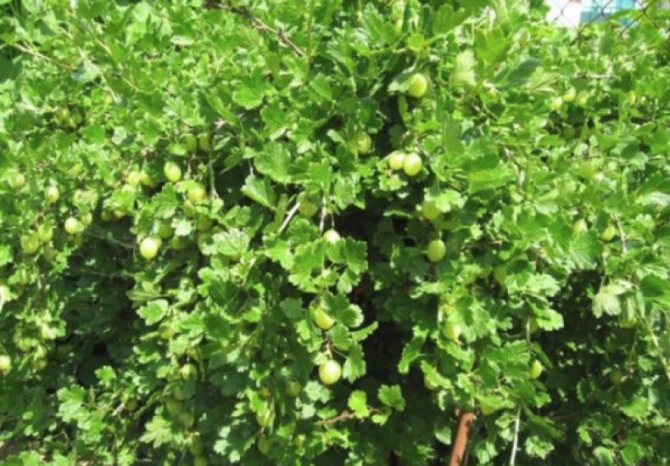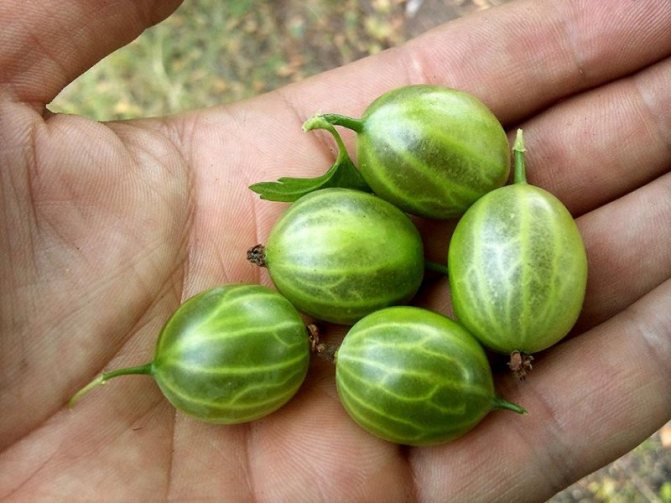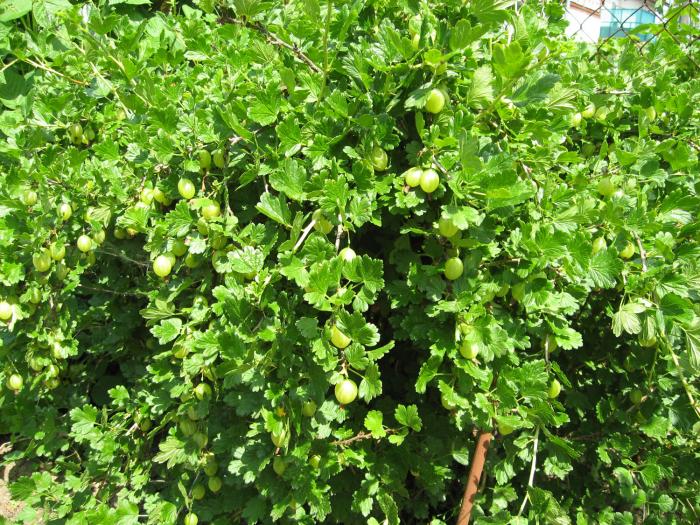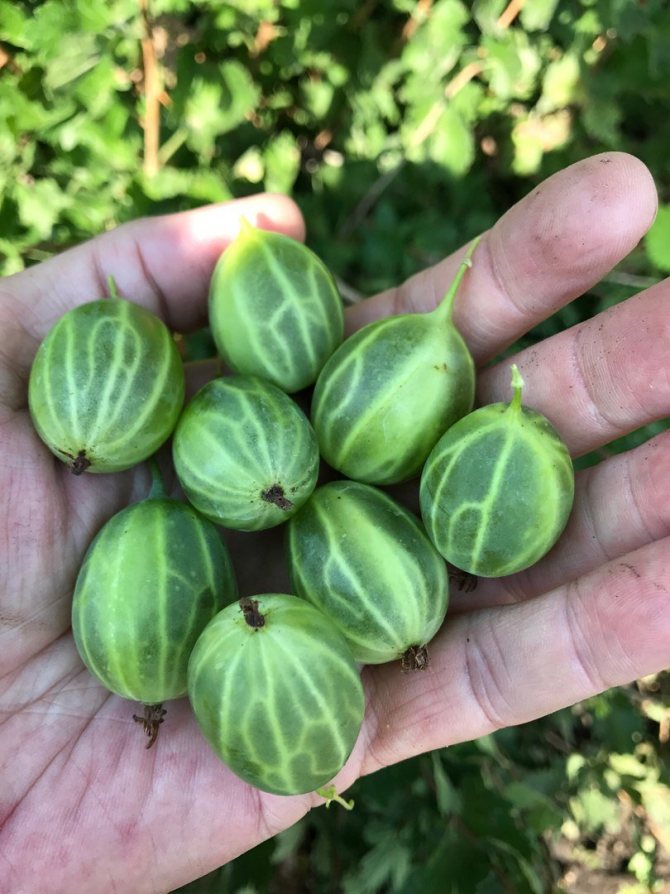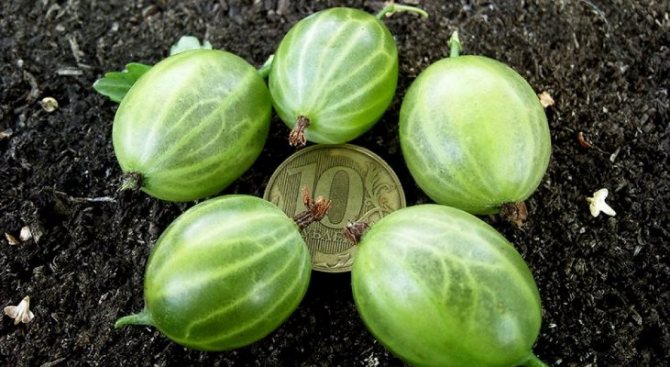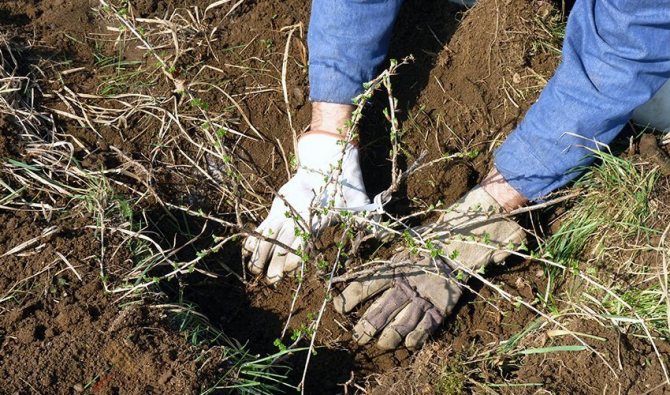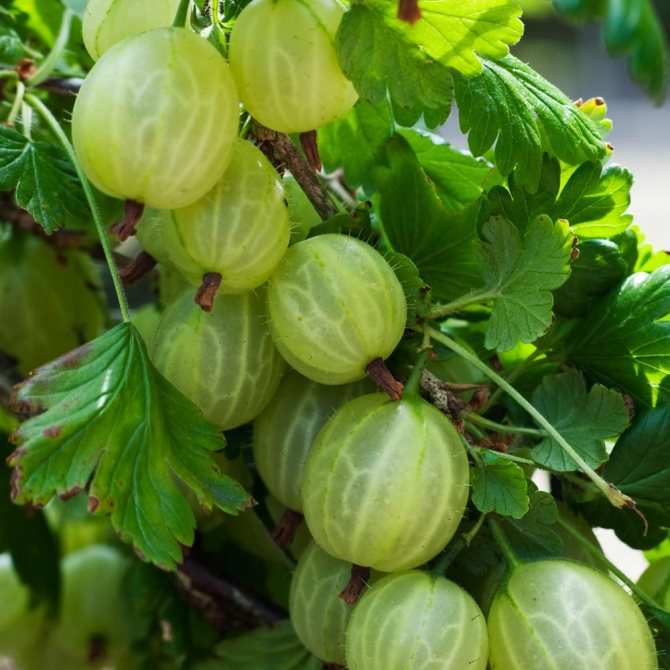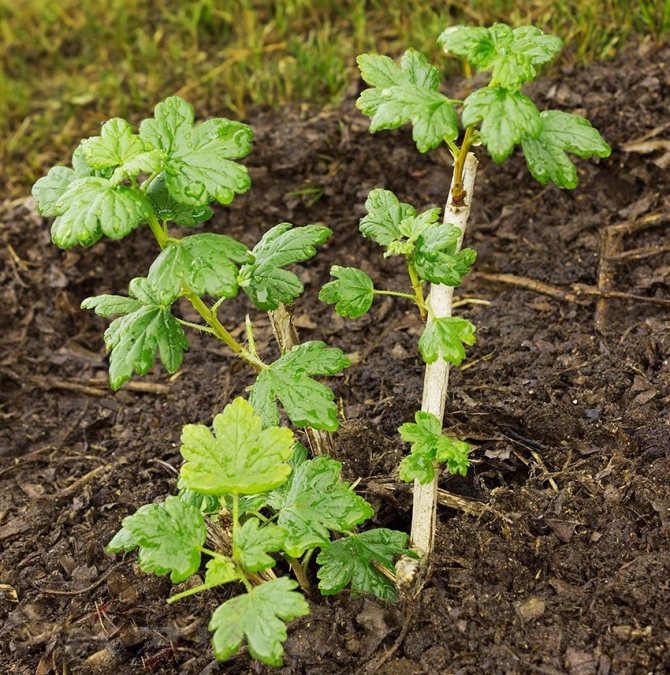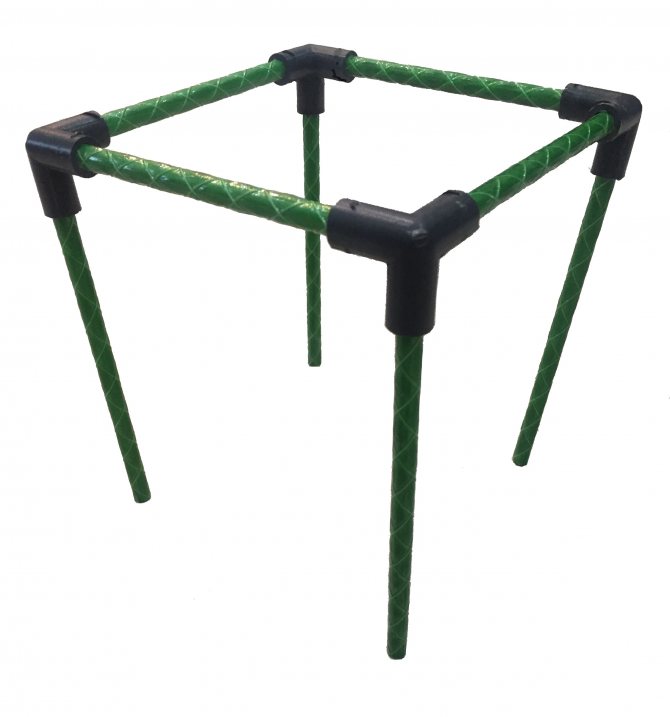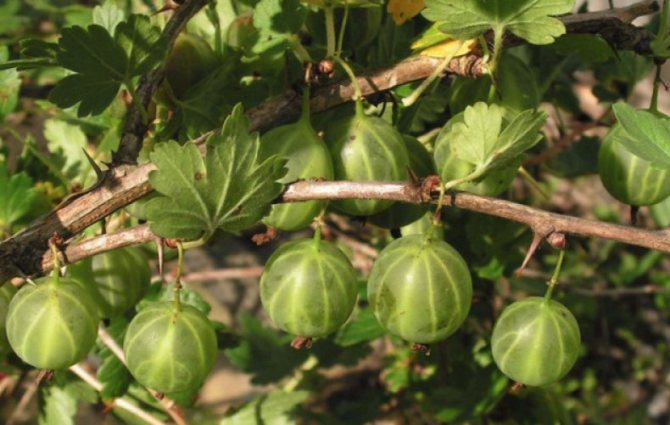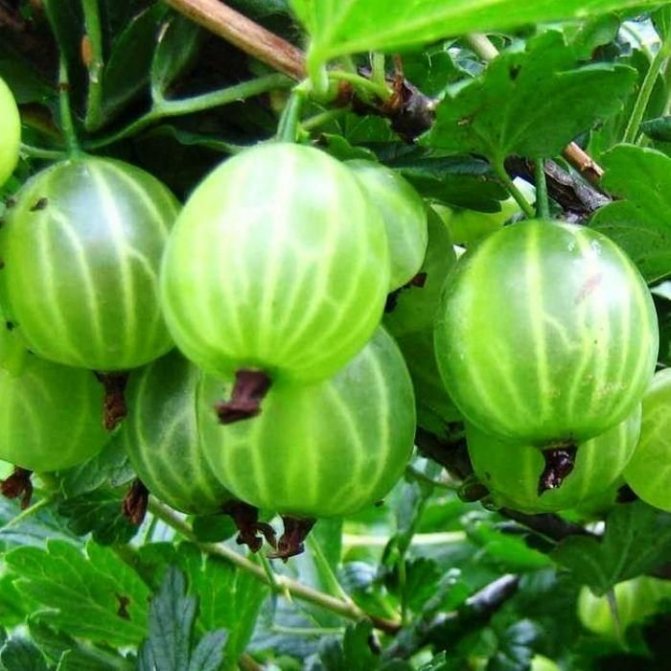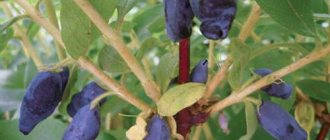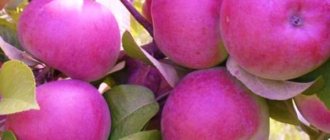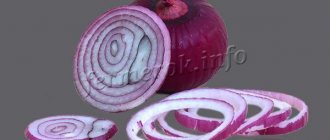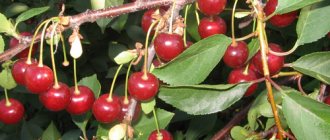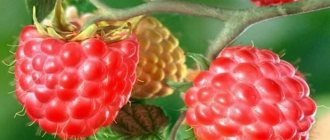The wild gooseberry is found on all continents. Should we be surprised at the unpretentiousness of the plant and its high adaptive properties? Breeders fully used these qualities to obtain new forms and varieties of berry bushes. So in 1959, Malachite was obtained in Russia - a hybrid of the famous European varieties Black Negus and Date.
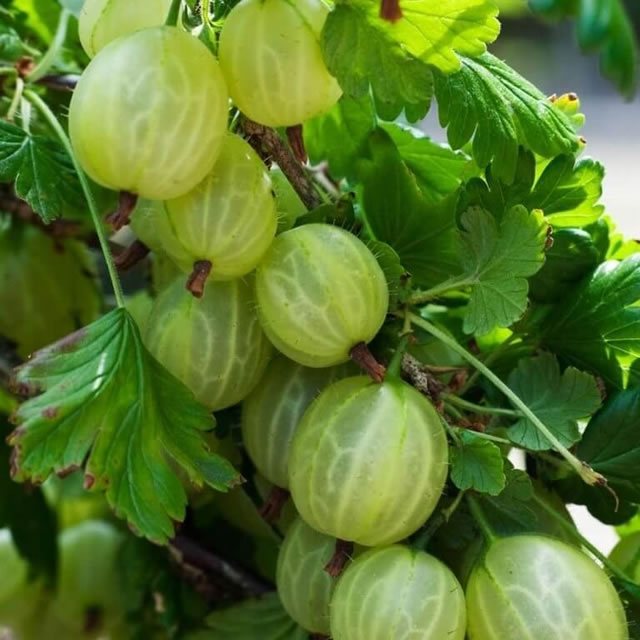
Breeding history of the variety
Gooseberry Malachite is a relatively new variety, developed on the basis of the best species characteristics of the plant, and is popular among amateur gardeners.
Given the prevalence of the shrub on almost all continents, it can be concluded that the gooseberry does not need to improve the degree of endurance. In Russia, it has been known as "bersen" or "kryzh" since the middle of the 16th century. But the wild bush has too small and sour fruits, numerous thorns and low yields.
The popular vitamin product interested the breeders of the V.N. Michurin. In 1959, they managed to develop a new hybrid, as a result of crossing the European varieties Date and Black Negus. Earlier varieties and hybrids of gooseberries were discovered and described in England at the beginning of the 17th century. By that time, more than a thousand varieties of gooseberries were already known.
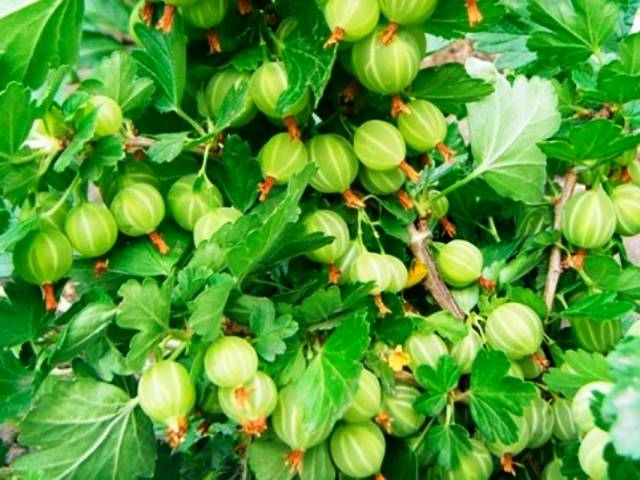

Well-deserved reward: harvesting
Already two years after planting, Malachite will give it a harvest, and after another two years it will begin a period of active fruiting. Berry picking usually takes place at the end of July. The advantages of this variety include the fact that the fruits do not crumble, but adhere perfectly to the branches.
Harvested in rainy weather cannot be stored.
Ripe berries are stored in a cool room for up to 5 days, and unripe berries - 10 days. You can freeze the berries by keeping them in the refrigerator. The shelf life, the possibility of transportation, the hardness of the berries and the tart sour taste - all this makes the Malachite variety perfectly suitable for all kinds of preservation.
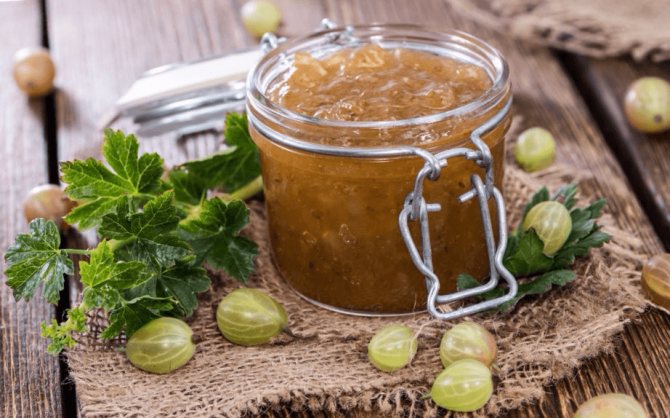

Gooseberries are good for a variety of blanks
Agrotechnical characteristics
As a result of selection, the Malachite hybrid acquired the following characteristics:
- The height of the bush is 1.3 m, spreading in the upper part, but compactly collected at the base in the root zone. Young shoots are green, slightly pubescent. On the shoots of the second year, thorns are formed, rarely located along the length of the stem.
- The mass of the berries is 5-6 g, their color is bright green at the stage of technical maturity, and upon biological maturation it acquires an amber hue, the berries have a thin skin, pronounced veins, the pulp of the fruit contains a large number of very small seeds.
- The table quality of berries is assessed by experts on a five-point scale - 3.9 - 5 points; acidity - 2%; sugar content - 8.6%; fruits are dense, with a rich characteristic aroma, high transportability and long shelf life.
- Gooseberries of the Malachite variety are used for making desserts, winter canning, and are distinguished by a high content of pectins.
- Ripening period - mid-early, fruiting period - extended.
- Productivity - 4 kg of berries from one bush; the peak of fruiting occurs at the age of three years; ovaries are formed on the shoots of the second year.
- Malachite is resistant to powdery mildew, frost resistance up to -300C.
Gooseberry Malachite is recommended for growing in the middle lane. With high resistance to low temperatures, gooseberries tolerate dry and hot summers much worse. It is believed that Malachite is a hybrid, but over the long years of its existence, more than 60 years, the shrub has acquired stable varietal characteristics, which gives reason to call this gooseberry a variety.
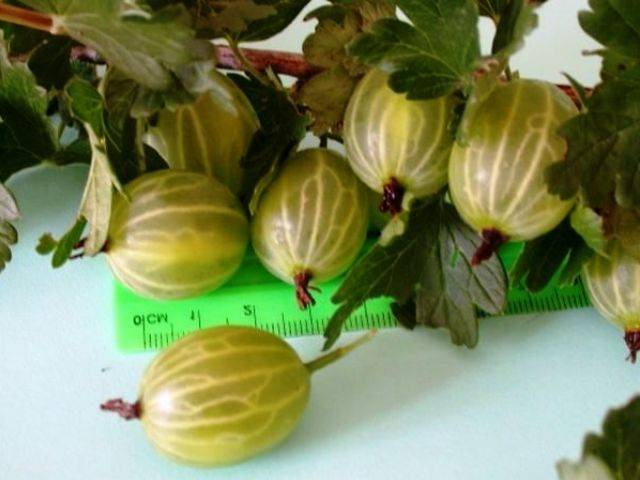

Pros and cons
| Advantages of the variety | disadvantages |
| Yield | |
| High palatability at the biological maturity stage | |
| Powdery mildew resistant | Not resistant to anthracosis |
| Frost resistance |
Berry
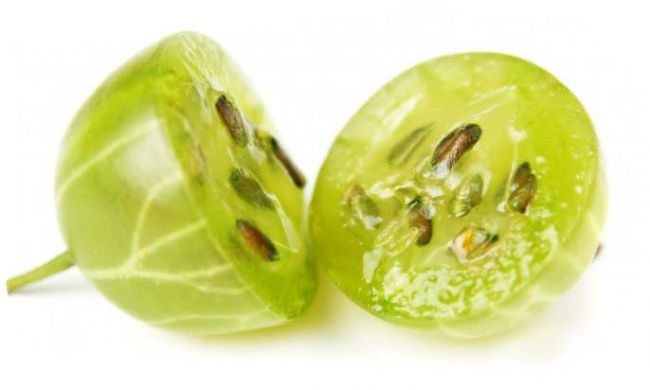

The product, for the sake of which the whole bush is grown, has an interesting, green color with a malachite shade, which is why the name of the variety is "Malachite". When the berry only grows, the color is intensely green, then it turns slightly pale, but does not reach yellowness and amber even at full maturity.
The average weight of a berry is in the range of 4-5 g, but each bush carries a certain amount of rather weighty berries, the weight of which reaches 7 g.
The berry is round, but at the same time, some specimens stretch out and acquire a pear-shaped shape.
The berry is smooth, without edging with a light waxy coating. The thin skin does not protect its contents very well and sometimes bursts when overripe.
It may be interesting Potatoes of the "Luck" variety - a good find for a summer residence Agapovsky pepper: universal, with a lot of advantages Cucumber varieties for open ground (Self-pollinated)
The flavor of the berry is not as good as the look. Recommended for technical purposes. The pulp itself is quite tender, but together with the skin, the taste of the berry is rather mediocre.
The berries of this variety are good for processing. Compotes and preserves are successfully obtained from them, but for fresh consumption you need to choose a different variety.
Growing conditions
With proper care, gooseberry Malachite bears fruit for fifteen years, starting in the second year of life. Bears abundantly from the third to the fifth year of life, then the yield decreases. But with proper care, timely pruning and renewal of shoots, the productivity of Malachite can be extended.
All gooseberry varieties prefer cultivation in open sunny areas with low groundwater levels. Malachite responds with a good harvest in fertile and light areas, but the use of fertilizing should be a carefully thought-out measure.
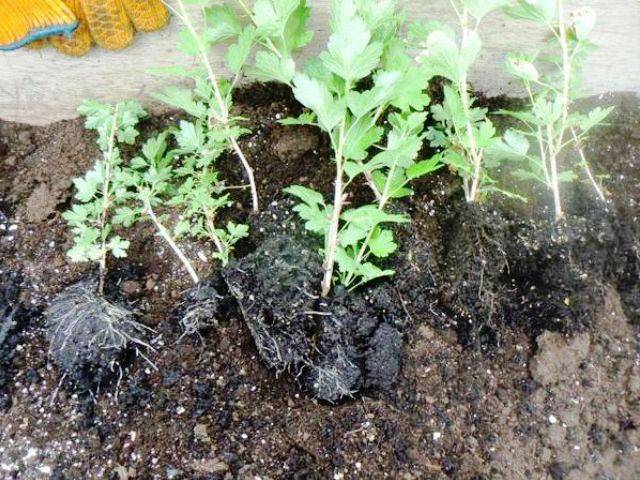

Landing features
Gooseberry seedlings purchased in the nursery are transplanted to a new place, deepening the root zone of the plant by 5-6 cm. Such a planting allows the plant to form replacement roots, and the plant tolerates transplantation more easily, which is inevitably associated with injury to the root system. Planting should be done in autumn or early spring, before sap flow begins.
Gooseberry seedlings should have 3-5 young shoots. Before planting the bush, it is recommended to treat the damaged roots with a disinfectant solution, "powder" with ash. Shoots should be cut off, leaving the length of the ground part of the plant 10-15 cm. Ideally, the length of the stems should not exceed the length of the main root.
The planting scheme of Malachite in a summer cottage can be somewhat compacted, with a lack of space. However, the shrubs should not be too thickened: this will complicate the further care of the plant, and will also adversely affect the ripening of the berries, which become sweeter under the influence of sunlight. The recommended planting scheme for gooseberries of the Malachite variety is 0.7-1.0 m. If the cultivation of gooseberries is planned in large volumes, then the distance between rows is 1.4-1.8 m. The planting depth is 0.5-0.6 m. After planting the soil in the root zone must be compacted.
Attention! It is not recommended to add top dressing to the prepared holes when planting gooseberries.
Top dressing is best done after rooting the bush, and limited to watering. For light sandy loam soil, one bush will require 10 liters of water for an autumn planting. In the spring, when planting in wet soil, you can halve the watering rate.
Shrub pruning
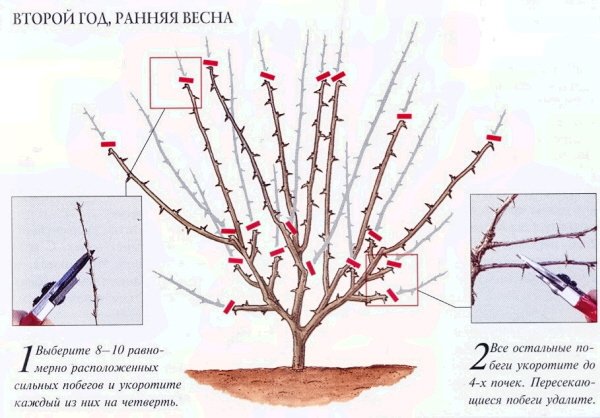

Many novice gardeners are confident that the more branches, the greater the yield. This is partly correct, but the shoots must be young and healthy. If the bush is 5-6 years old, start cutting out old shoots, they will not make the bush more productive because:
- old wood physiologically cannot carry out the laying of flower buds;
- pathogens and pests hibernate in the perennial bark;
- old branches occupy the center, and young ones go to the periphery, as a rule, less illuminated and ventilated, and therefore, the yield on them becomes lower;
- large thickening contributes to poor ventilation and drying, which also contributes to the spread of pathogens.
Carry out the main pruning of gooseberries in the fall, at the time of sanitary measures, and in the spring, only prune broken branches and bushes will always be neat.
Having planted gooseberries, care and cultivation, pruning, watering, feeding and treatment with prophylactic agents will be mandatory measures. Without these agrotechnical conditions, it is impossible to grow a garden and a berry field. By applying strength, means and knowledge, you can certainly get an excellent harvest of tasty and healthy berries.
Care rules
The rules of care for gooseberries of the Malachite variety are standard, as for all berry bushes. Young shoots of the first order form flower stalks next spring. Therefore, two-year-old stems must be removed regularly to prevent thickening of the bushes. It should not be forgotten that timely thinning of the shrub will eliminate the need to fight pests and diseases. Overgrown gooseberry bush gives lower yields of small and too acidic berries.
Agrotechnology for growing gooseberry Malachite consists of four mandatory stages.
Support
The gooseberry bush Malachite, as mentioned above, has a height of 1.3 m. Such shoots, under the weight of the fruit, are capable of lodging in the fruiting phase. Therefore, support for gooseberries is necessary. There are several ways to support:
- The easiest way is to tie the shrub with twine during the ripening period. But this method only saves the stems and fruits from contact with the soil surface, where pests live - insects and pathogenic microorganisms. The inconvenience of such a support is felt when harvesting.
- Installing round or square rigid supports on racks around bushes that are larger in diameter than the area occupied by the bushes. The height of the support is 50-60 cm. In this case, the stems of the gooseberry rest freely on rigid ribs.
- The height of the Malachite stems allows the shrub to be placed on trellises. This garter method is ideal in every way.
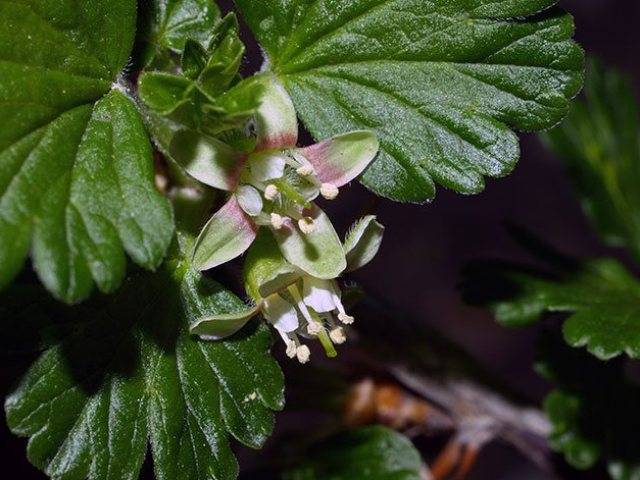

Top dressing
Gooseberries bear fruit for a long time if you regularly feed the bush. You only need to make top dressing in the autumn, along the perimeter of the crown, where the tips of the roots are located. During the winter period, thanks to the introduction of a nutrient mixture, the structure of the soil will improve. It is during the transition of the plant to the dormant phase that top dressing is most favorable for gooseberries. Prepare a mineral mixture:
- 50 g superphosphate;
- 25 g of ammonium sulfate;
- 25 g of potassium sulfate.
Combine the dry mixture with compost. Gooseberry top dressing is applied dry, as this berry shrub prefers slow and gradual nutrient saturation. Fertilizers dissolved in water, which are quickly absorbed, are poorly tolerated. Spread the prepared top dressing around the bush, having previously loosened the topsoil. After a couple of weeks, you can add a diluted mullein - 5 liters of organic matter per 10 liters of water per gooseberry bush.
Pruning bushes
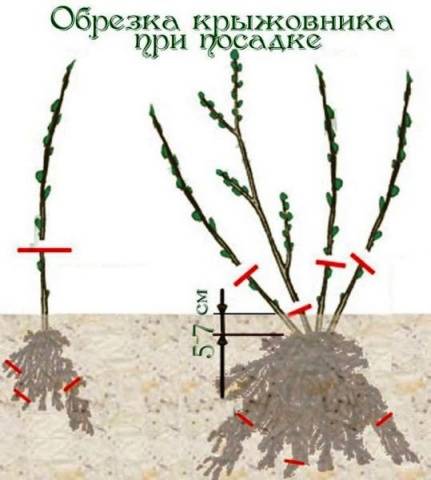

Malachite grows annually by 10-14 shoots. Stems older than 5 years are cut at the root in the fall, and the growth of 1-3 years is cut 10 cm above the root collar. In spring, for abundant flowering and the formation of large fruits, young shoots are pinched, cutting off the tops by 10 cm.
Attention! The places where the stems are cut must be treated with garden varnish.
Preparing for winter
In the fall, after pruning and feeding, before the onset of cold weather, gooseberries are huddled, covering the root zone. Malachite is a frost-resistant shrub, but warming during the winter period contributes to the early awakening of the plant and the appearance of friendly young shoots. In the spring, before the shrub wakes up, the protective layer should be removed and the surface loosening of the soil in the root zone should be carried out, in case the larvae of pests have overwintered next to the shrub. While the larvae are asleep, pour boiling water over the area and spray it onto the stems of the plant. "Hot shower" will relieve the gooseberries from the harmful neighborhood and awaken the kidneys.
Preparing for the winter season
Malachite is a fairly frost-resistant variety, but this does not mean that preparatory work for wintering should be canceled.
Even before the onset of a cold snap, the bushes are spud, creating additional protection for the root system. When grown in a harsh climate, it will not be superfluous to insulate the plant from agrofibre or canvas fabric. The branches are tied at the roots and wrapped with prepared material. All this is fixed with a rope.
Even before the plant wakes up in the spring, it is necessary to remove the blanket and loosen the soil well.
Pest and disease control
Unfortunately, rare plants bloom and bear fruit safely without attracting the attention of pests. Despite its high resistance to many diseases, gooseberry Malachite is not immune to the destruction of the crop by insects. Briefly, the control measures for the main pests are set out in the table:
| Pest | Biological methods of control | Chemical protection |
| Gooseberry moth | Soil mulching, removal of damaged berries, infusion of tomato leaves, ash, mustard, biological products | Karbofos, Actellic, Fufanon, Spark, Gardona |
| Sawfly | Pruning old shoots, mulching, spilling the root zone with boiling water in early spring, Fitoferm | Fitoverm, Ambush |
| Aphid | Ash or tobacco infusion (irrigation), Bitobaxibacillin | Decis |
| Moth | Kinmix |
Advice! To control pests of gooseberry Malachite, use chemical remedies only as a last resort, especially during the fruiting period.
After chemical treatment, you can start picking berries no earlier than 2 weeks later, and the harvested crop must be washed thoroughly.
The Malachite variety is resistant to powdery mildew, but summer residents will have to fight other diseases when growing this variety on their own.


Gooseberry breeding
The Malachite variety cannot but be to your taste: in order not to waste money and time on purchasing planting material, you can get high-quality seedlings on your own.
| Way | What is it | Advantages and disadvantages |
| Cuttings | In early summer, cut green cuttings with a "heel". They are rooted in a nutrient substrate under constant moisture control. | The way is troublesome: if you miss the moment and do not water on time, the stalk will surely die. The advantage is that you can get as many seedlings as you like. |
| Dividing the bush | In the fall, dig out a bush and cut the root zone into divisions. | We are not talking about the advantages here - it is enough to imagine the process of dividing a sprawling thorny gooseberry bush. |
| Vaccinations | A scion of the Malachite variety is grafted onto the stock. | Is that as an experiment - the method does not have special economic value. |
| Seeds | After stratification, seeds are germinated and grown in a school until 2 years of age. | Unlimited cuttings after 2 years is a good option for growing commercial seedlings. |
| Layering ("Chinese method") | The drooping lower branch in August should be pinned to the soil and covered with a low mound of earth. The cuttings should be watered regularly. Rooting occurs in about a month, but you should not separate the layers from the mother bush until spring. | The easiest and most effective way in cases where you need to get several seedlings. The plants are strong and give the first fruits the next season. |
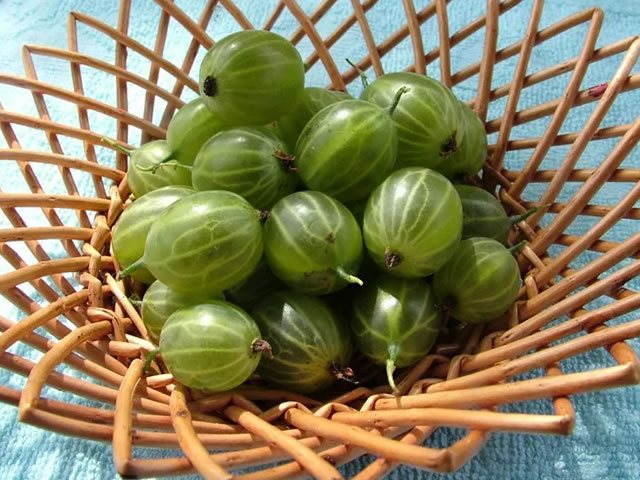

Landing
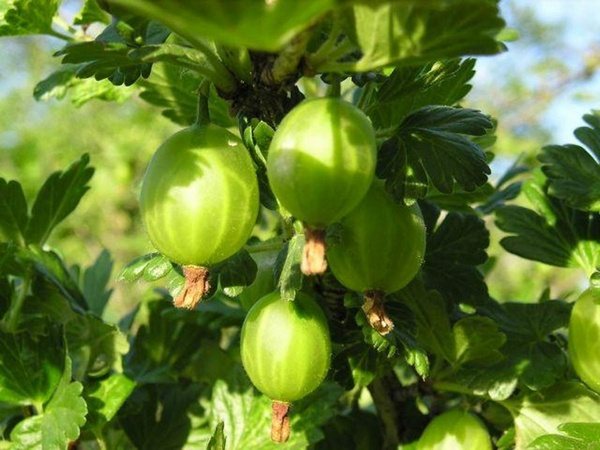

For the Malachite bushes, you need to choose a sunny place, protected from the wind by natural or artificial protection. It is best to plant in an elevated position to avoid problems caused by excess moisture. Gooseberries of this variety prefers loose clay soils with low acidity.
Proper site preparation for gooseberries involves cultivating the soil a year before planting. During this time, it is necessary to remove all perennial weeds from the site, since after planting the bushes it will be more difficult to fight them, in particular, the use of herbicides will become unacceptable. The soil needs to be enriched with nutrients, to improve its structure, and to bring the acidity index back to normal.
Attention!
Planting will be more successful in the fall if it is carried out at least 3 weeks before the onset of frost. Ideally, for high-quality rooting, the seedling should be left with a "head start" of 5 weeks.
You need to prepare a hole for a bush in advance: after digging a hole, put fertilizer on the bottom and water it. After that, the hole is left for about half a month. The depth of the hole should be about 60 cm, the diameter should be 50 cm, 1.5-2 meters should be left between the holes. As a fertilizer, you can use humus or manure, adding superphosphate and fertile soil to the mass.
For planting, choose one-year or two-year-old seedlings that have 3-4 strong shoots at least 30 cm long and well-developed roots, of which 2-5 should have a length of more than 12 cm.
Signs of a healthy seedling:
- If there is living green tissue under the bark of the shoot.
- The buds of the plant are alive, they do not crumble when crushed with fingers, they are moist inside.
- Shoots are flexible.
- The roots are not damaged or dried out.
- On the cut, the root has a light shade, close to beige, but not dark brown.
Before planting, the roots are shortened to 20 cm, dried out areas are removed to living tissue. Shoots are pruned after planting, leaving 5-6 buds. For the next three years, all shoots should be removed from the bush, except for the three strongest ones.
Water a young plant once a week. It is recommended to mulch the trunk circle.

